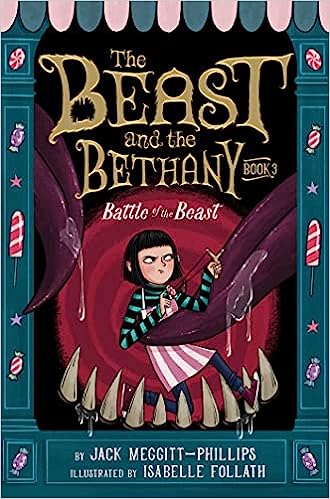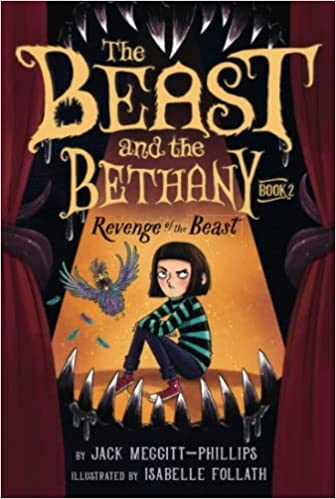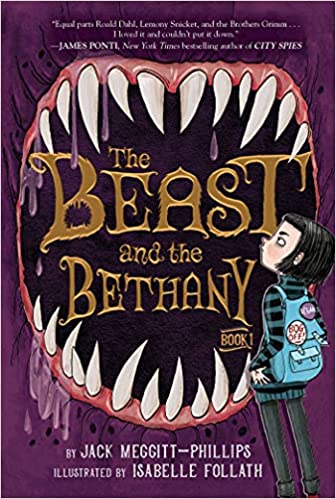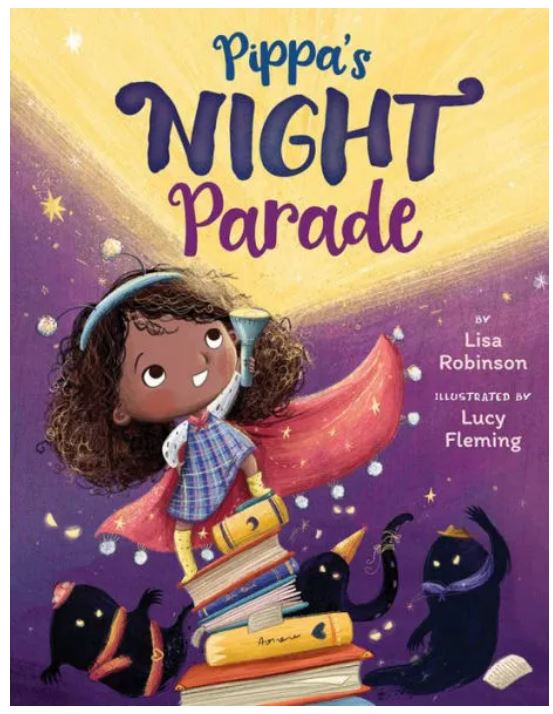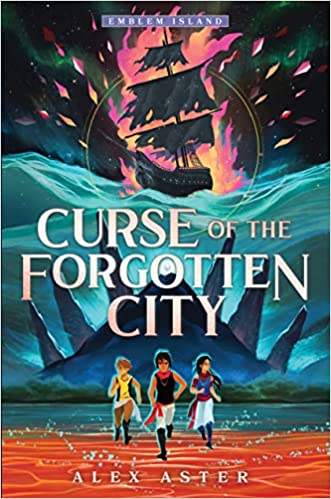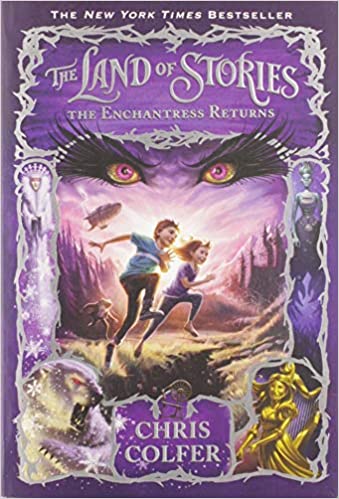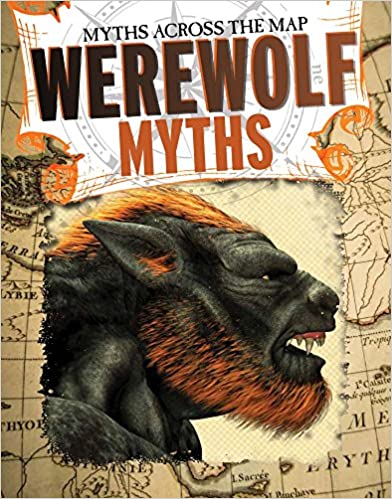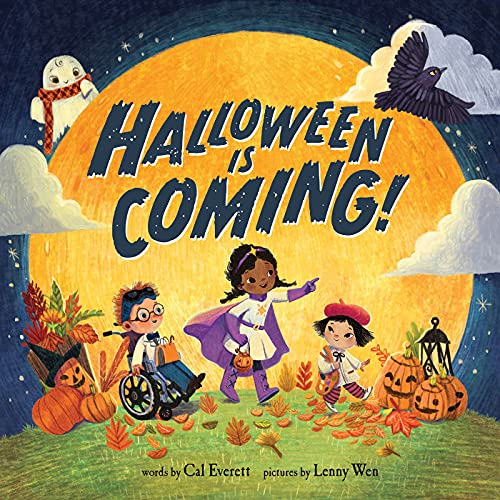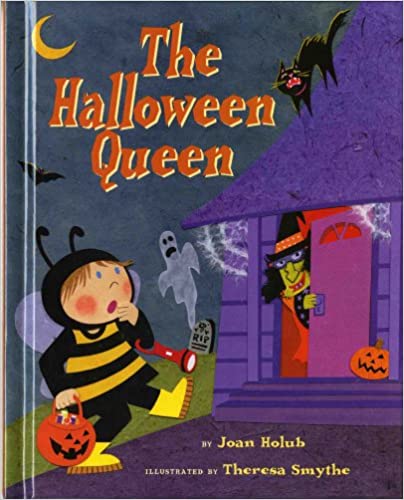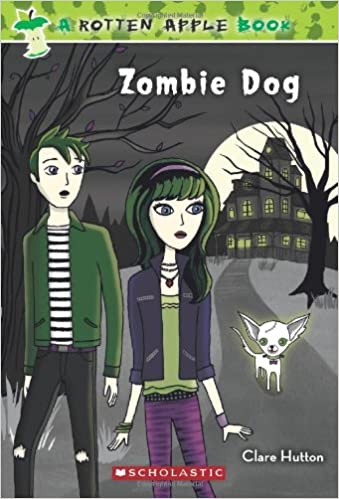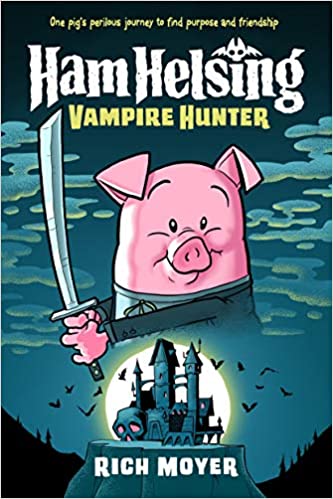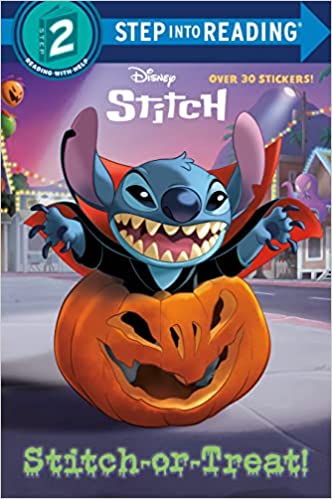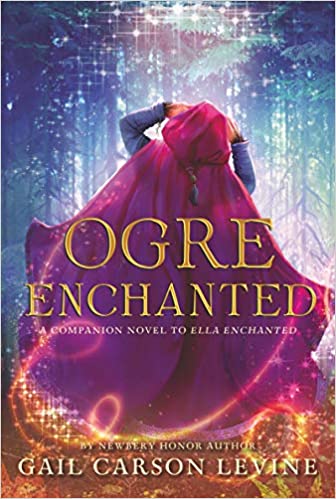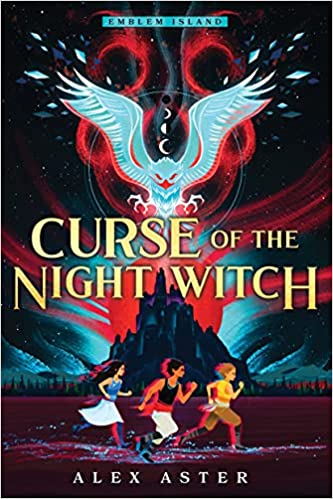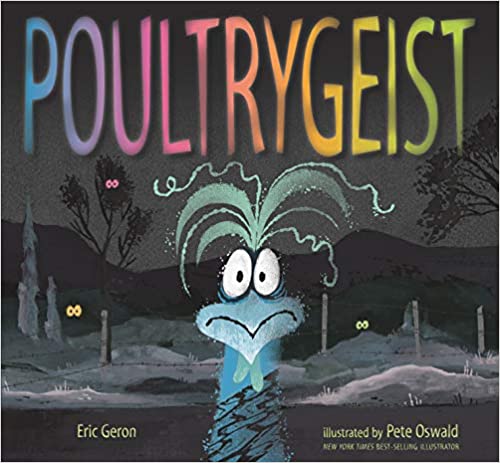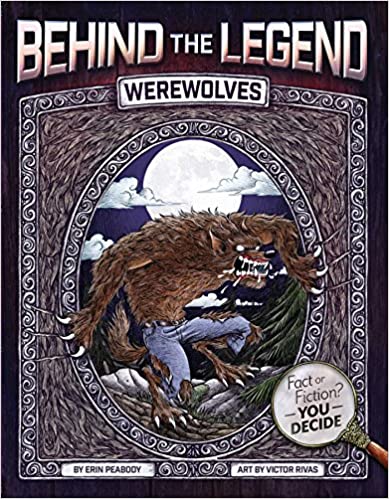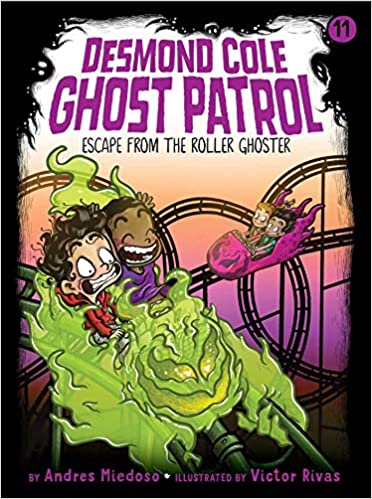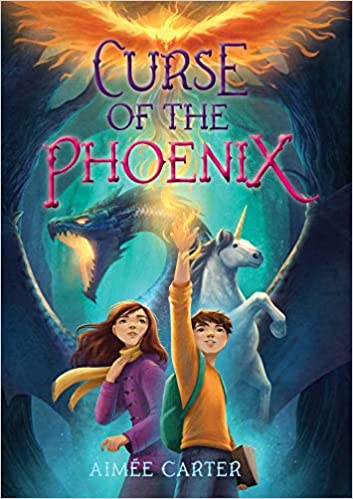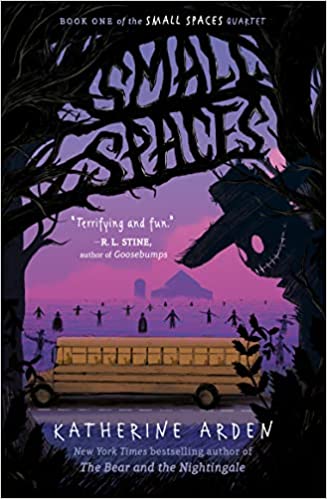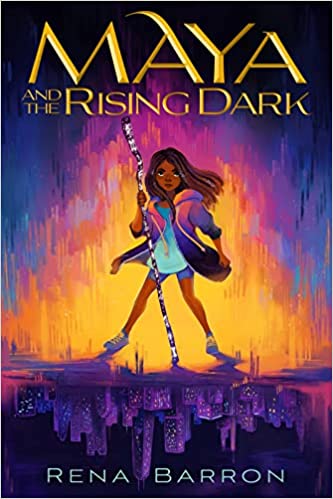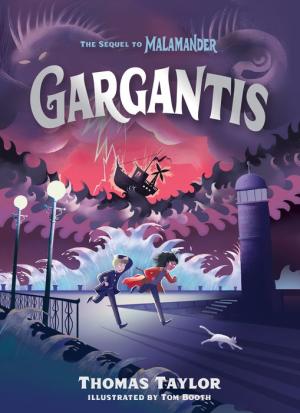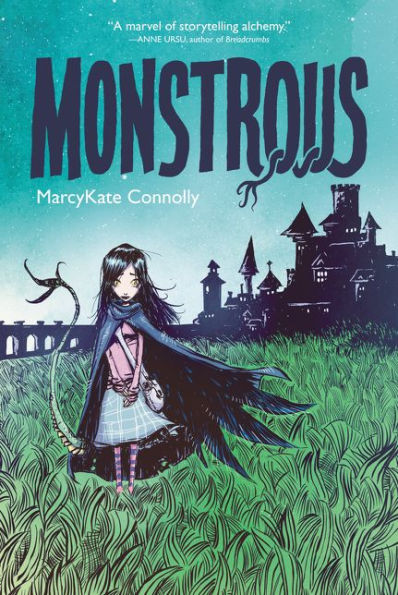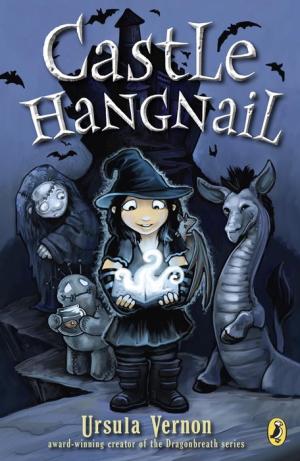The beast wraps his slimy tongues around Bethany and brings her to his sharp teeth to consume her in one bite. Right before she is devoured, she wakes up in a pool of her own sweat. She calms herself by remembering the beast is locked away, far away. However, Bethany was not the only one left with scars after the beast’s last attack. After being in the care of D.O.R.R.I.S, Claudette is returned home to the Wintloria Forest. She is too weak to walk, fly, or even sing. The beast took a lot from Claudette and left her with painful memories. Claudette’s dearest friend from the forest, Mortimer, is determined to travel to the beast and avenge her.
Although Ebeneezer no longer has the beast to worry about, he sure has the green-eyed monster– Jealousy. The whole town is praising all of Bethany’s “good doing.” The town’s people are so grateful for her good work that Miss Muddle, the sweetshop owner Bethany apprentices for, decides to throw her a not-so-surprise surprise party. Everywhere Ebeneezer and Bethany go, someone asks if they can take her pictures and they compliment her. On the other side, Ebenezer is ridiculed for his “Wise Tweezer business’’ that consisted of poor solutions to the neighbor’s problems like smelling rose-scented candles instead of healing the garden. For Bethany, life was better than it ever has been. At least it was until they find out that the beast has escaped.
Meggitt-Phillips does a great job keeping The Battle of the Beast entertaining by being unpredictable with the beasts’ fate, and it’s true identity. Although it is the third book in the series, the story isn’t repetitive because the reader gets a new perspective on the villain, the beast, and the theme of forgiveness. Bethany has an extremely hard time trusting the beast since she believes there is no way he will ever be good. But she realizes everyone in the neighborhood thought the same thing about her. Battle of the Beast makes the reader choose between Bethany’s belief that the beast will never change or Ebenezer’s belief that the beast has changed. This aspect keeps the reader engaged and connected with the story.
Battle of the Beast is the most exciting book in the series; the tension between characters makes the reader unsure who is telling the truth, which keeps the reader on edge. There are many black-and-white illustrations in the book that show up every couple of chapters. Some of the illustrations can be as simple as a few feathers at the bottom of the page and others can be so big it covers both pages. And, although the beast is in a dog costume, the reader also gets to see the beast for the first time with these illustrations. On the other hand, the beast uses a lot of “baby talk” which becomes tedious. Despite this, the story highlights the theme of friendship, but the theme of forgiveness and guilt are more prominent. The reader must decide for themselves if the beast is worth an “I forgive you.” Readers ready for more monster-related humor should check out Castle Hangnail by Ursula Vernon and Evil Alien Warlord Cat Series by Johnny Marciano & Emily Chenoweth. Meggitt-Phillips teases the reader at the beginning of the fourth book. But the new monsters may be Bethany’s parents.
Sexual Content
- Geoffrey asks Bethany on a date. Ebenezer makes fun by saying, “OOOOH, Bethany’s got a crush, Bethany’s got a crush. . . . Bethany and Geoffrey sitting in a tree, K-I-S-S-I–” However, he is interrupted when Bethany says, “Shut up, gitface. If you dare say anything like that again, I’ll unleash a plague of moths into you knit-wear lounge.”’
Violence
- Like many of the other parrot’s in the Wintloria forest, Mortimer’s parents were killed by trophy hunters. This is never described, but it is mentioned because Claudette “had acted as a mother to him after his parents had been killed by trophy hunters.”
- Bethany has nightmares of the beast. One night she has a nightmare that the beast is going to eat her and Ebenezer dies. “Bethany cried, as the beast’s two fat tongues slithered around her neck like a pir of greedy cobras. She was trapped in the glowing red walls of a D.O.R.R.I.S laser cage. Her best friend, the young 512- year-old Ebenezer Tweezer was lying dead on the floor…As Bethany was dragged closer to her death, she realized that this was inevitable. She’d never had a chance of defeating the beast. And then, just as she was about to be chomped to pieces, Bethany woke up.” There is a black and white illustration of Bethany being wrapped in tongues and Ebenezer lying dead with X’s on his eyes. After this, she sees Ebenezer, and says, “I’m really glad you haven’t been horribly murdered.”
- The nightmare wasn’t Bethany’s first. Bethany’s other nightmares are described too. For example, “Sometimes her mind had devised elaborate scenarios involving exploding teapots and volcanic beehives; other times it had kept things classic with simple head-chomping.”
- When Bethany is at the orphanage, she is told that Timothy, the new orphanage director, forgot to feed the children because he was too busy organizing files. Bethany storms into his office and throws his papers out of the window. “Timothy screamed as if Bethany had just thrown a bunch of babies out of the window.”
- Bethany and Ebenezer are transported to the D.O.R.R.I.S headquarters to be informed of the beast’s escape. While there, Mr. Nickle tells them there is “extremely good news.” Bethany becomes infuriated by his lack of concern. “Bethany decided she would give Mr. Nickle a kick in his stupid shins. She charged at him, but the old man used his sticks to karate-chop her to the ground.”
- As the beast is being released from his laser cage, it falls “flat on its face, and a nail from the metallic floors got jammed in one of its eyes . . . The beast pulled the nail out and licked its eye until the cut healed.”
- After finding out Ebenezer is helping the beast, Bethany attacks him. “She pinned him down and started beating him around the head . . . Ebenezer pulled Bethany’s hair. She kicked him repeatedly where she knew it would hurt most – his beloved waistcoat.”
- The beast vomits out a machine to help clean for Miss Muddle, but Bethany is skeptical about the beast’s intentions. She tries to warn Miss Muddle. “Bethany tried to say something, but Ebenezer slammed the door and kept his hand over her mouth, until Miss Muddle left. Bethany eventually got some teeth free and used them to bite Ebenezer hands.” The bite makes Ebenezer bleed.
- Mortimer wants to avenge Claudette, so he plans on killing the beast. He says, “I’m going to kill the beast. I’m going to pluck its eyes out and tear apart its flesh with my talons. I plan on taking my time with it– and I promise I’ll make sure that it receives three dollops of pain for every ounce of suffering it has caused Claudette.’”
- Bethany warns Mortimer that she believes the beast is pretending to have lost its mind. She tells him, “it could reveal its true self at any moment.” Mortimer responds, “‘I hope it does,’ said Mortimer. ‘That way I can see the evil in its eyes before I pluck them out.’”
- Ebenezer reminds Bethany she once shoved worms up Geoffrey’s nose.
- Mortimer attacks the beast. “Mortimer dived, still screeching – aiming its kitchen-knife talons at the beast’s middle eye, like a dart about to plunge into the bull’s-eye.” The beast protects himself with its “mouth spread wider than the beast could have ever thought possible. Then just as quickly and instinctively, the mouth snapped shut again – snapping off Mortimer’s lovely, sharp talons . . . As the beast chewed the crunchy spikes, other things started to return to its mind as well.”
- The neighborhood finds out Bethany was going to help Mortimer kill the beast. As Geoffrey tries to stand up for Bethany, Geoffrey says, “We wouldn’t be friends if I thought she was in any way a killer.”
- The “gifts” the beast gave everyone turn rogue. The scarf he gave the zookeeper “wrapped itself tighter and tighter around the lizard lady’s neck, until it made her croak for mercy.”
- The beast turns frisbees into axes. “The axe-shaped Frisbees started flying around the room– making everyone duck, out of fear of decapitation.” People scream in fear.
- The beast tells Ebenezer what he would do to Mortimer if he wanted to. “I’ll drink the insides out of that parrot’s talons like a sippy cup! I’ll wiggle my fingers and chop off the heads of every stupid neighbor here if you want me to.”
- In order to wake people up, “the beast started waking people up by slapping the Frisbee’s across their faces.”
- The beast tells Mortimer to “stay absolutely silent or I’ll boil you into a soup.”
Drugs and Alcohol
- Miss Muddle gives Bethany a Super-Duper Deluxe hot chocolate. After this, “Bethany woke up late in the sweetshop with the worst sugar hangover in the world . . . She was surrounded by empty mugs and Super-Duper Deluxe Muddle Hot Chocolates.”
Language
- Mortimer gets angry at a parrot and calls it a “blithering twerp!”
- Bethany calls Ebenezer “gitface” throughout the book.
- Bethany says “flipping” as an expletive. For example, she says, “It’s actually going pretty flipping awesomely” and, “How should I know you flipping idiot?!”
- Bethany frequently tells people to “bug off.”
- When Ebenezer hangs his self-portrait around town, someone writes “useless” and “I am a twerp” on them.
- Hell is used several times. For example, Miss Muddle answers the phone and says, “Oh hell?” She says, “Sorry, I mean– hello?”
- Occasionally characters call each other idiots.
- Bethany calls someone a “traitor” and a “dim-witted nincompoop of a buffoon!”
- When the beast vomits a box, someone asks, “What the bleedin’ hell is that?”
- The beast calls Bethany a “snot-brain.”
Supernatural
- The home of Claudette, the Wintloria forest, is described as “magical”. “The trees were said to possess an ancient and beguiling form of magic – leaves that could wipe away scars, fruit nourishing enough to sustain an entire family for a week, bark that could scratch any itch, no matter how irksome or inconveniently located.”
- The workers at D.O.R.R.I.S travel via “puddle portals.” These portals allow people to transport quickly with minimal dampness.
- There is an illustration of the D.O.R.R.I.S headquarters. In this illustration, there are aliens with three heads and walking fish with briefcases.
- Like the other books in the series, the beast vomits out items. However, his vomit is gifts for the neighborhood like toys for the orphanage and hearing aids for the elders.
Spiritual Content
- When Mortimer is about to kill the beast, the beast asks, “Why?” Mortimer responds saying, “Because you’re a monster. You’re the devil in blob form who deserves a long, slow, punishing death.”
